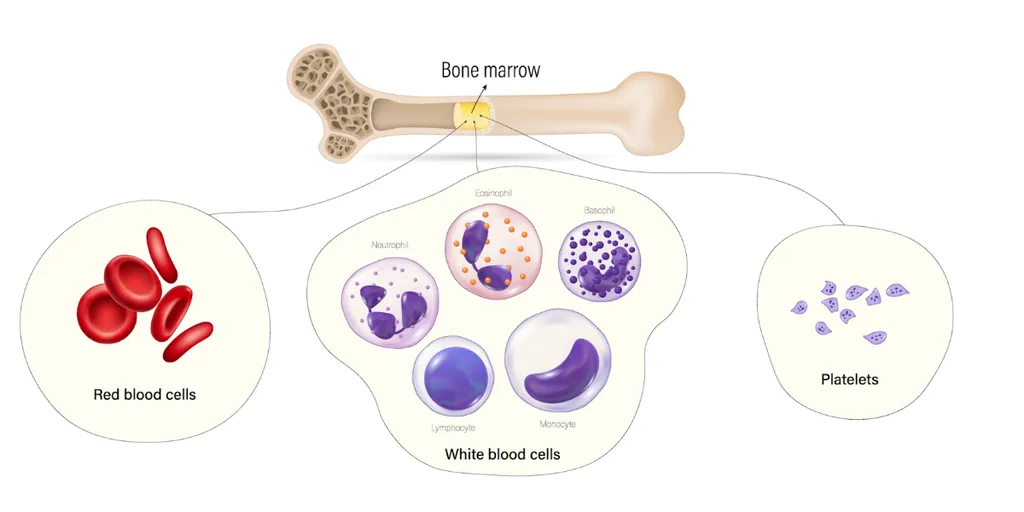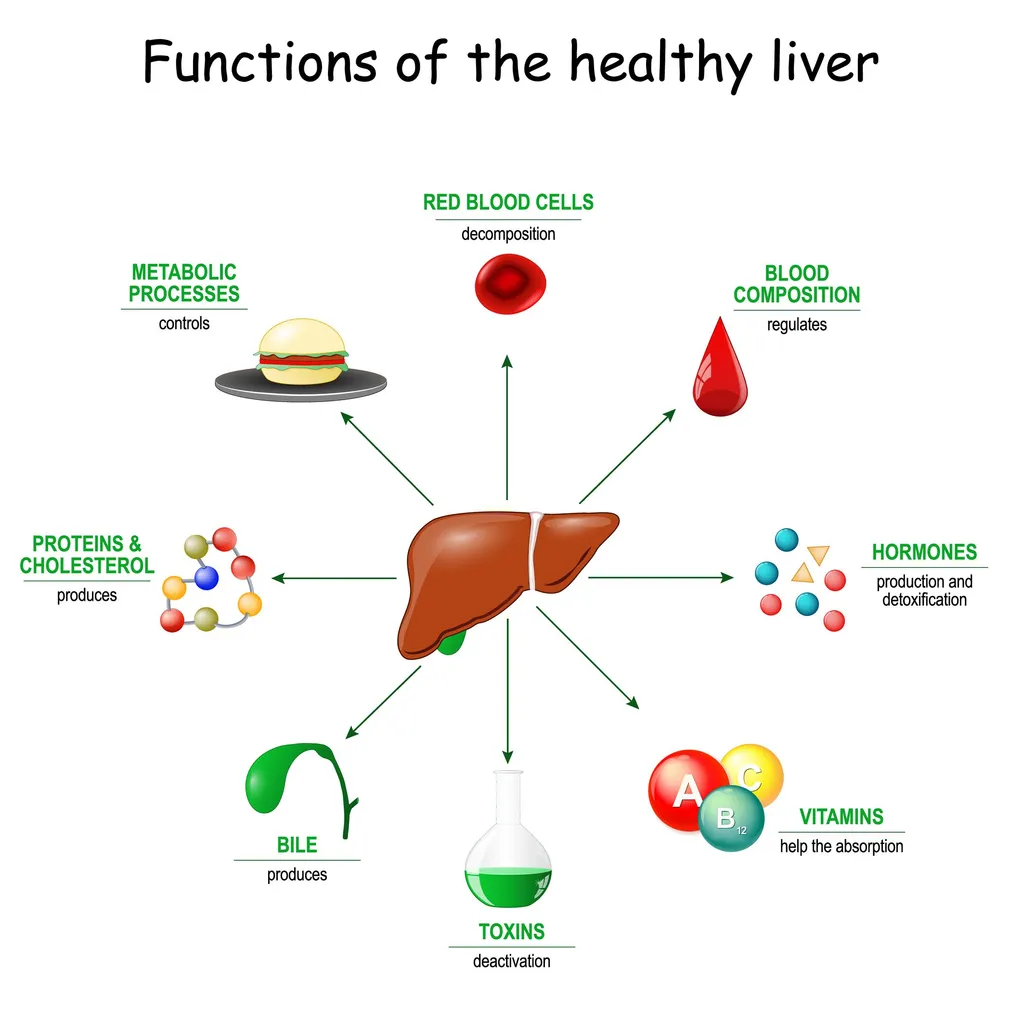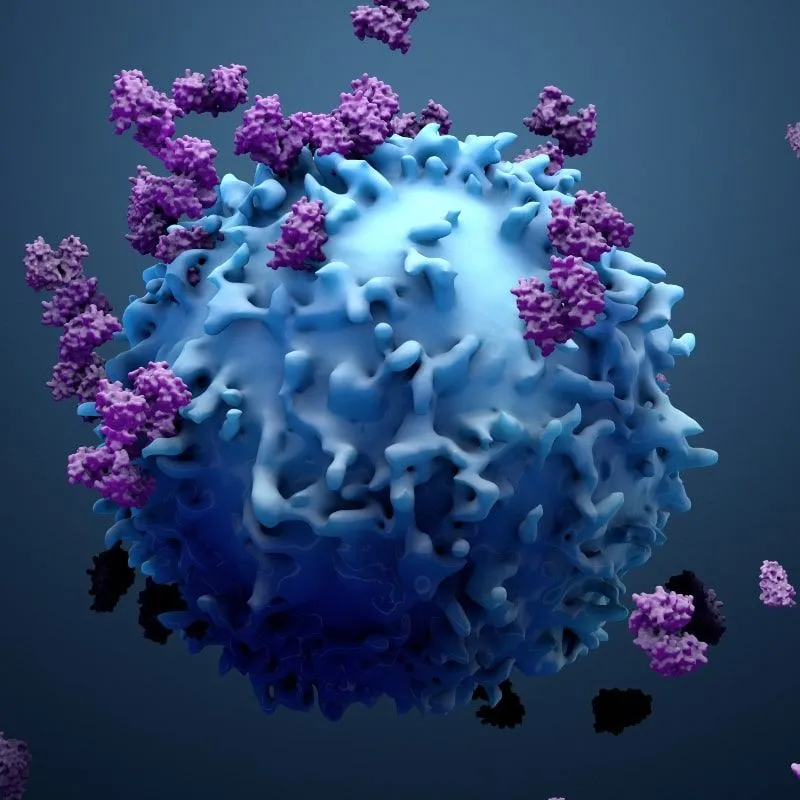How Does Lymphoma Show Up In Bloodwork?

B-cell lymphomas are a type of blood cancer representing the majority (80-85%) of non-Hodgkin lymphomas (NHLs). NHLs are a diverse group of blood cancers that affect immune cells known as lymphocytes, with different symptom patterns and responses to treatment. NHL usually originates in lymphoid tissues like lymph nodes or spleen and can spread to other organs.
How Can Lymphoma Alter Your Bloodwork?
When diagnosed with lymphoma or facing a relapse, blood work is a crucial part of monitoring the overall health. Blood tests can provide information about the body's condition and how lymphoma affects the normal body functions. In this article you’ll learn the most common alterations in blood work that lymphoma patients might experience, what each value means, normal ranges, and why these values can be altered.
Complete Blood Count (CBC)
A Complete Blood Count (CBC) is a common blood test that provides important information about the different cells that constitute your blood. Blood cells are produced in the bone marrow. When lymphoma cells invade the bone marrow, they can crowd our healthy bone marrow cells, making it difficult for the normal production of blood cells to occur. This is why patients with lymphoma often experience altered blood cell counts in their test results.

White Blood Cells (WBC)
- Normal range: 3.2-10.6 k/ul
- What it means: White blood cells are crucial for fighting infection. Lymphocytes and neutrophils are types of white blood cells.
- Why it’s altered: Lymphoma can either increase WBC counts due to the overproduction of abnormal lymphocytes (lymphocytosis) or decrease WBC counts if the disease affects the bone marrow’s normal function (neutropenia). Due to the essential role of these cells in the immune system’s defenses, altered counts will always be linked to an increased risk of infection or an active infection.
Red Blood Cells and Hemoglobin (Hb)
- Normal range: 12.1-15.9 g/dL
- What it means: Hemoglobin is the protein in red blood cells (erythrocytes) that carries oxygen throughout your body.
- Why it’s altered: Lymphoma cells invading the bone marrow can decrease the production of red blood cells, leading to lower hemoglobin levels, which is commonly known as anemia.
Platelets
- Normal range: 150 - 440 k/ul
- What it means: Platelets are fragments of a cell called megakaryocyte that circulate in the blood and play a crucial role in blood clotting and wound healing.
- Why it’s altered: If lymphoma affects the bone marrow, it can result in a low platelet count, known as thrombocytopenia, which can lead to an increased risk of bleeding and bruising.
What is Other Blood Tests Can Detect Lymphoma?
Lactate Dehydrogenase (LDH)
- Normal range: 100 - 253 or 300 - 600 U/L
- What it means: LDH is an enzyme found in almost all body tissues, and high levels can indicate tissue damage. The range varies greatly in this lab value for many reasons: each laboratory has a different range for what's considered normal. Your lab report should show the range that your lab uses for each test. Another reason is that your doctor will look at your results and, based on age, health, and other factors, will make a full-picture interpretation of what might be happening in your body. A value that isn't in the normal range may still be normal for you.
- Why it’s altered: Elevated LDH levels are common in lymphoma patients and can indicate the presence and extent of disease and be a marker of tumor burden.
Erythrocyte Sedimentation Rate (ESR)
- Normal range: 0 to 22 mm/hr for men, 0 to 29 mm/hr for women, but it gradually increases with age.
- What it means: ESR is a test that indirectly measures the amount of inflammation in the body. It measures the rate at which the red blood cells, or erythrocytes, fall to the bottom of a blood sample tube.
- Why It’s altered: Elevated ESR can be seen in lymphoma due to the inflammatory response caused by the disease.
Beta-2 Microglobulin (β2M)
- Normal range: 0.70 to 1.80 mg/L
- What It means: Beta-2 microglobulin is a protein found on most cells' surfaces, but some, particularly lymphocytes, release it into the blood. β-2 microglobulin is usually elevated in some cancers, inflammation diseases, and kidney disease.
- Why it’s altered: In lymphoma, high levels of β-2 microglobulin can indicate a higher number of lymphoma cells or tumor burden, making it a useful marker for diagnosis and prognosis.
Liver Function Tests (LFTs)
- What they mean: These tests assess liver function.
- Why they’re altered: Abnormal levels can indicate that lymphoma cells are invading the liver. Side effects from some treatments can also produce changes in liver function.

Liver function tests measure the levels of enzymes and proteins in the blood produced by the liver. They are an indicator of the liver health status and they can also alert if there are obstructions in the biliary tract. The indicators for liver functions are:
- Alanine aminotransferase (ALT): is an enzyme that can be elevated when the liver is damaged by viral infection, fibrosis (cirrhosis), non-alcoholic steatohepatitis, also known as fatty liver, and drug toxicity. In rarer cases, it can also be elevated when there are muscle injuries from trauma or excessive exercise.
- Normal range: 7 to 56 units per liter
- Aspartate aminotransferase (AST): is also an enzyme used to measure liver health, however, it is less specific because it can be found in other tissues.
- Normal range: 10 to 40 units per liter
- Alkaline phosphatase (ALP): is an enzyme that also helps determine the functioning of the liver and gallbladder or identify concerns with the bones. Its function in the body is important in calcium metabolism. It can also be helpful as an infection or inflammation indicator.
- Normal range: 44 to 147 units per liter
- Bilirubin: It is the product of red blood cell metabolism, and it also helps break down food in the digestive system. It has a yellow color, and high bilirubin levels can alter the skin color and make it yellow. In more severe cases it can also tint the eyes yellow; this condition is called jaundice. When bilirubin levels are low, it can produce a rare condition called acholia, where the stool is white instead of brown, and choluria, when the urine color is black as a cola soda. This can happen when there is a bile tract obstruction.
- Normal range: 0.1 to 1.2 milligrams per deciliter
Monitoring blood work is essential for managing lymphoma. Understanding these common alterations can help you navigate your health status and engage in more informed discussions with your healthcare team. Consult your healthcare provider to interpret your results and develop a personalized care plan.
Take control of your care with HealthTree Cure Hub!
With HealthTree, you can continue learning about lymphoma, discover treatment options, find a specialist or a clinical trial, and so much more! Sign up for a free patient account today to get started.
Sources:
- https://emedicine.medscape.com/article/202677-overview#a2
- https://healthtree.org/myeloma/community/resources
B-cell lymphomas are a type of blood cancer representing the majority (80-85%) of non-Hodgkin lymphomas (NHLs). NHLs are a diverse group of blood cancers that affect immune cells known as lymphocytes, with different symptom patterns and responses to treatment. NHL usually originates in lymphoid tissues like lymph nodes or spleen and can spread to other organs.
How Can Lymphoma Alter Your Bloodwork?
When diagnosed with lymphoma or facing a relapse, blood work is a crucial part of monitoring the overall health. Blood tests can provide information about the body's condition and how lymphoma affects the normal body functions. In this article you’ll learn the most common alterations in blood work that lymphoma patients might experience, what each value means, normal ranges, and why these values can be altered.
Complete Blood Count (CBC)
A Complete Blood Count (CBC) is a common blood test that provides important information about the different cells that constitute your blood. Blood cells are produced in the bone marrow. When lymphoma cells invade the bone marrow, they can crowd our healthy bone marrow cells, making it difficult for the normal production of blood cells to occur. This is why patients with lymphoma often experience altered blood cell counts in their test results.

White Blood Cells (WBC)
- Normal range: 3.2-10.6 k/ul
- What it means: White blood cells are crucial for fighting infection. Lymphocytes and neutrophils are types of white blood cells.
- Why it’s altered: Lymphoma can either increase WBC counts due to the overproduction of abnormal lymphocytes (lymphocytosis) or decrease WBC counts if the disease affects the bone marrow’s normal function (neutropenia). Due to the essential role of these cells in the immune system’s defenses, altered counts will always be linked to an increased risk of infection or an active infection.
Red Blood Cells and Hemoglobin (Hb)
- Normal range: 12.1-15.9 g/dL
- What it means: Hemoglobin is the protein in red blood cells (erythrocytes) that carries oxygen throughout your body.
- Why it’s altered: Lymphoma cells invading the bone marrow can decrease the production of red blood cells, leading to lower hemoglobin levels, which is commonly known as anemia.
Platelets
- Normal range: 150 - 440 k/ul
- What it means: Platelets are fragments of a cell called megakaryocyte that circulate in the blood and play a crucial role in blood clotting and wound healing.
- Why it’s altered: If lymphoma affects the bone marrow, it can result in a low platelet count, known as thrombocytopenia, which can lead to an increased risk of bleeding and bruising.
What is Other Blood Tests Can Detect Lymphoma?
Lactate Dehydrogenase (LDH)
- Normal range: 100 - 253 or 300 - 600 U/L
- What it means: LDH is an enzyme found in almost all body tissues, and high levels can indicate tissue damage. The range varies greatly in this lab value for many reasons: each laboratory has a different range for what's considered normal. Your lab report should show the range that your lab uses for each test. Another reason is that your doctor will look at your results and, based on age, health, and other factors, will make a full-picture interpretation of what might be happening in your body. A value that isn't in the normal range may still be normal for you.
- Why it’s altered: Elevated LDH levels are common in lymphoma patients and can indicate the presence and extent of disease and be a marker of tumor burden.
Erythrocyte Sedimentation Rate (ESR)
- Normal range: 0 to 22 mm/hr for men, 0 to 29 mm/hr for women, but it gradually increases with age.
- What it means: ESR is a test that indirectly measures the amount of inflammation in the body. It measures the rate at which the red blood cells, or erythrocytes, fall to the bottom of a blood sample tube.
- Why It’s altered: Elevated ESR can be seen in lymphoma due to the inflammatory response caused by the disease.
Beta-2 Microglobulin (β2M)
- Normal range: 0.70 to 1.80 mg/L
- What It means: Beta-2 microglobulin is a protein found on most cells' surfaces, but some, particularly lymphocytes, release it into the blood. β-2 microglobulin is usually elevated in some cancers, inflammation diseases, and kidney disease.
- Why it’s altered: In lymphoma, high levels of β-2 microglobulin can indicate a higher number of lymphoma cells or tumor burden, making it a useful marker for diagnosis and prognosis.
Liver Function Tests (LFTs)
- What they mean: These tests assess liver function.
- Why they’re altered: Abnormal levels can indicate that lymphoma cells are invading the liver. Side effects from some treatments can also produce changes in liver function.

Liver function tests measure the levels of enzymes and proteins in the blood produced by the liver. They are an indicator of the liver health status and they can also alert if there are obstructions in the biliary tract. The indicators for liver functions are:
- Alanine aminotransferase (ALT): is an enzyme that can be elevated when the liver is damaged by viral infection, fibrosis (cirrhosis), non-alcoholic steatohepatitis, also known as fatty liver, and drug toxicity. In rarer cases, it can also be elevated when there are muscle injuries from trauma or excessive exercise.
- Normal range: 7 to 56 units per liter
- Aspartate aminotransferase (AST): is also an enzyme used to measure liver health, however, it is less specific because it can be found in other tissues.
- Normal range: 10 to 40 units per liter
- Alkaline phosphatase (ALP): is an enzyme that also helps determine the functioning of the liver and gallbladder or identify concerns with the bones. Its function in the body is important in calcium metabolism. It can also be helpful as an infection or inflammation indicator.
- Normal range: 44 to 147 units per liter
- Bilirubin: It is the product of red blood cell metabolism, and it also helps break down food in the digestive system. It has a yellow color, and high bilirubin levels can alter the skin color and make it yellow. In more severe cases it can also tint the eyes yellow; this condition is called jaundice. When bilirubin levels are low, it can produce a rare condition called acholia, where the stool is white instead of brown, and choluria, when the urine color is black as a cola soda. This can happen when there is a bile tract obstruction.
- Normal range: 0.1 to 1.2 milligrams per deciliter
Monitoring blood work is essential for managing lymphoma. Understanding these common alterations can help you navigate your health status and engage in more informed discussions with your healthcare team. Consult your healthcare provider to interpret your results and develop a personalized care plan.
Take control of your care with HealthTree Cure Hub!
With HealthTree, you can continue learning about lymphoma, discover treatment options, find a specialist or a clinical trial, and so much more! Sign up for a free patient account today to get started.
Sources:
- https://emedicine.medscape.com/article/202677-overview#a2
- https://healthtree.org/myeloma/community/resources

about the author
Jimena Vicencio
Jimena is an International Medical Graduate and a member of the HealthTree Writing team. She has a passion for languages and is currently learning Japanese. In her free time, she loves playing with her cats. Jimena is also pursuing a bachelor's degree in journalism.
More on Navigating Your Health
Get the Latest Enteropathy-Associated Intestinal T-Cell Lymphoma Updates, Delivered to You.
By subscribing to the HealthTree newsletter, you'll receive the latest research, treatment updates, and expert insights to help you navigate your health.








